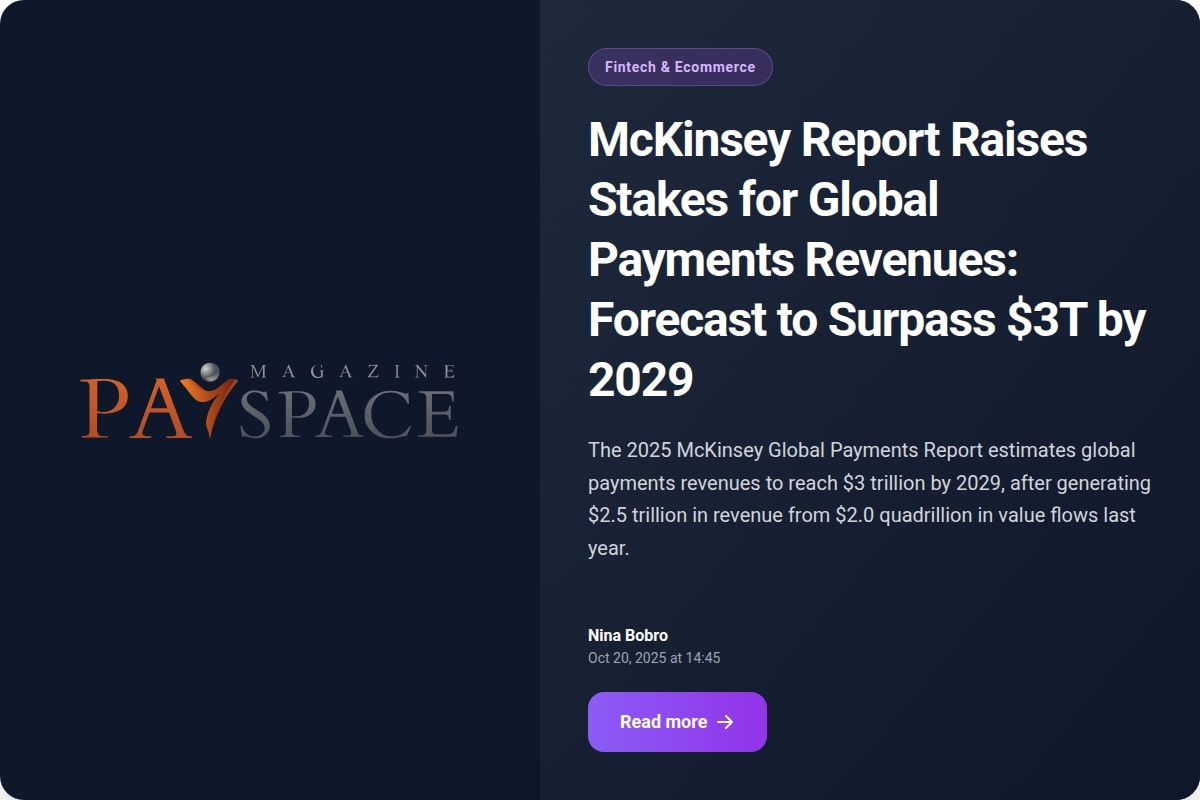The 2025 McKinsey Global Payments Report estimates global payments revenues to reach $3 trillion by 2029, after generating $2.5 trillion in revenue from $2.0 quadrillion in value flows last year.

According to McKinsey’s latest insights on the global payment market, which cover data from 50 countries representing 95% of global GDP and over two dozen payment methods, the payments sector continues to be the most valuable segment within financial services, aggregating $2.5 trillion in revenue from $2.0 quadrillion in value flows and supported by 3.6 trillion transactions globally.
From 2019 to 2024, global payments revenue increased on average by 7% annually. However, in 2024, payment revenue growth slowed to 4%, subdued by peaking interest rates and a more muted macroeconomic environment, notably down from the 12% increase in 2023.
Nevertheless, McKinsey doesn’t expect the growth to continue decreasing significantly in the next few years. Therefore, revenue in the payments industry is projected to continue expanding at an annual rate of 4% through 2029. At this baseline rate, the sector’s total market size is expected to reach $3.0 trillion by 2029. However, depending on broader global conditions, growth could range from 3% in the event of major disruptions to as high as 6% if productivity gains accelerate.
In any case, these predictions far exceed earlier estimations from Boston Consulting Group (BCG), which predicted global payments growth only to $2.4 trillion by 2029. At the same time, both reports note that Latin America, the Middle East, and Africa are projected to outpace more mature markets in Europe, North America, and Asia-Pacific in growth.
Payments revenues are roughly balanced between consumer and commercial segments, though regional dynamics differ. North and Latin America are driven by consumer credit card activity, while APAC’s revenues lean toward commercial accounts supported by deposit-based income. EMEA shows a more even mix, with significant contributions from both consumer savings and corporate banking tied to trade and treasury services.
Cash usage continues to decline, notes McKinsey, now representing 46% of global payments, down from 50% in 2023. Meanwhile, account-to-account (A2A) payments are expanding rapidly, and digital wallets make up about 30% of global point-of-sale volume, driven by markets like India, Brazil, and Nigeria.
As transaction volumes shift to lower-yield systems such as instant payments, monetization pressures are increasing, prompting new fee models like those emerging in India’s UPI network.
In B2B payments, digital adoption is strong but concentrated in low-margin methods such as bank transfers and instant payments. To capture value, software-focused firms are investing in tools like invoice automation and working capital management, especially for small businesses and sectors with manual workflows.
Emerging technologies, from tokenized money and digital currencies to AI-driven fraud detection and liquidity management, are reshaping the landscape, though adoption remains uneven due to regulatory, infrastructure, and standardization challenges.









